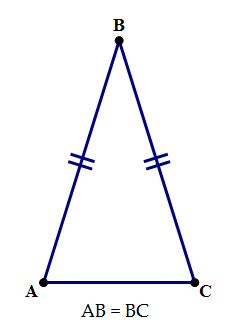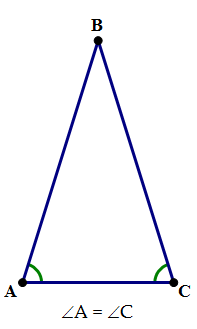


The quantitative section asks, among other things, about geometry. One of the QUANT’s favorite figures is the isosceles triangle. An isosceles triangle is one that has two congruent sides. Knowing simply that about a triangle has profound implications for answer QUANT Problem Solving & Data Sufficiency questions.
Euclid first proved this theorem over 2200 years ago. The theorem says:
If the two sides are equal, then the opposite angles are equal
and
if the two angles are equal, then the opposite sides are equal.
It can be used for deductions in both directions (logically, this is called a “biconditional” statement”). Another way to say this: a statement about equal angles is sufficient to conclude equal sides; conversely, a statement about equal sides is sufficient to conclude equal angles. Remember that on QUANT Data Sufficiency!



Another favorite QUANT geometry fact is that the sum of all three angles in a triangle − any triangle − is
Suppose you are told that Triangle ABC is isosceles, and one of the bottom equal angles (called a “base angle”) is
Suppose you are told that Triangle ABC is isosceles, and the vertex angle is
BUT, if you are told that Triangle ABC is isosceles, and one of angles is